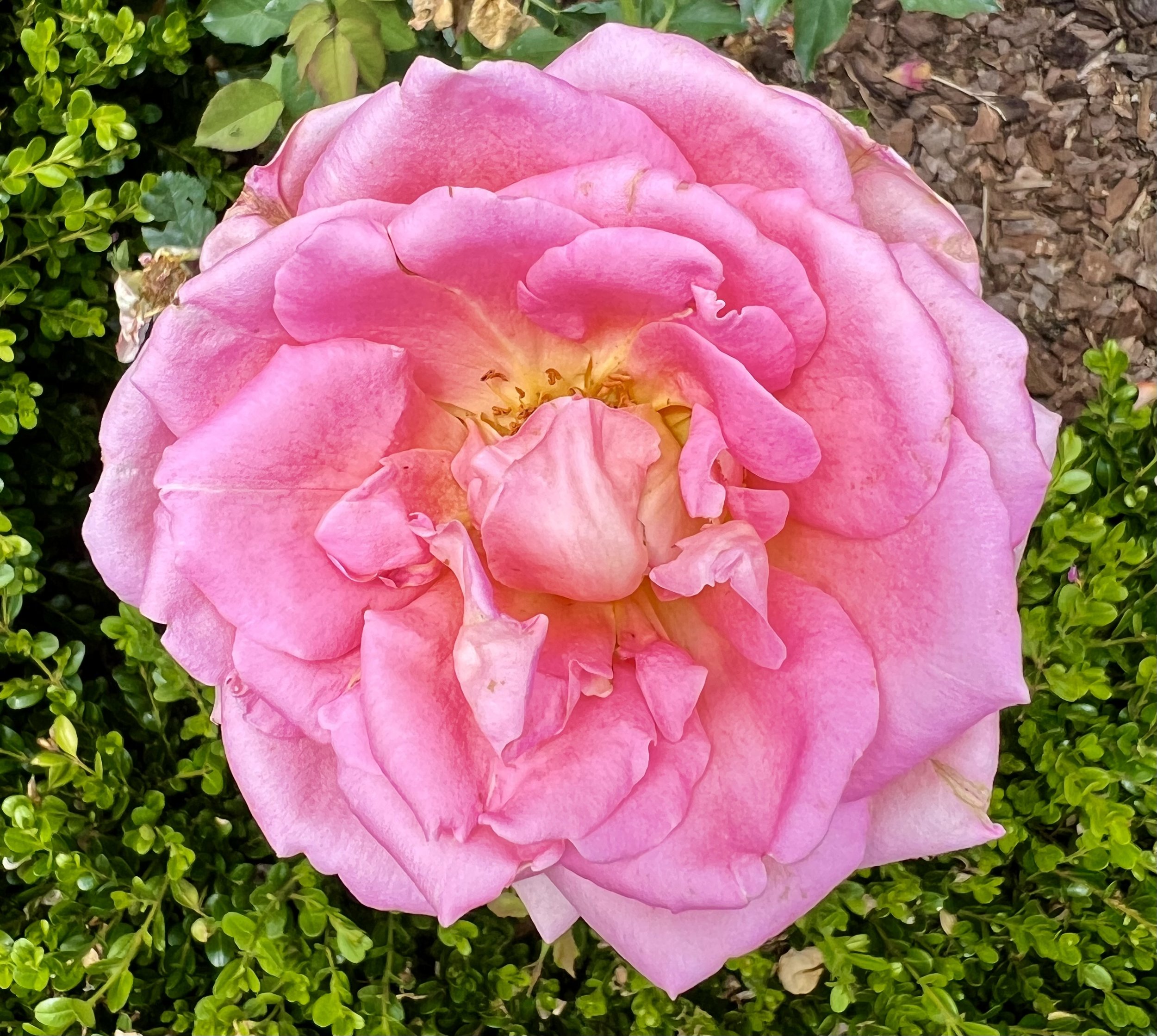monthly hormone fluctuations - cycle syncing for hormone harmony
Women’s moods, nutritional needs, and energy levels constantly change throughout the monthly cycle. Therefore, the foods we consume and how we move our bodies should change throughout the month as well. This will help create harmony with the natural fluctuations in our hormones.
Making these adjustments is helpful in balancing hormones and preventing excess stress on your body. Keep reading to learn more about the natural fluctuations throughout the menstrual cycle and cycle syncing as a way to combat hormone imbalances!
If you have not yet, read my blog on hormones and balancing hormones for some background info!
Women’s hormones and their fluctuation during the menstrual cycle
These hormones are responsible for our monthly cycle (read more about these hormones here):
Estrogen (sex hormone)
Progesterone (sex hormone)
Testosterone (sex hormone)
Follicle Stimulating Hormone (FSH)
Luteinizing Hormone (LH)
A woman's menstrual cycle is divided into 2 (more like four) unique phases:
Menstrual (part of the follicular phase) days 1-5 - Estrogen and progesterone are low. The lining of the uterus called the endometrium, is shed, causing bleeding
Follicular days 6-14 - Estrogen and progesterone are on the rise
Ovulatory days 15-17 - Estrogen peaks. Testosterone and progesterone rise
Luteal days 18-28 - Estrogen and progesterone levels are high. If the egg isn't fertilized, hormone levels decrease, and the menstrual cycle starts again
Credit - Jill Merkel, RD
Mood changes and energy levels during phases
Menstruation (days 1-5) - Estrogen and progesterone are low. Energy levels are low, and mood can be low as well
The follicular phase (days 6-14)- a mood enhancer that lasts around two weeks until ovulation. As estrogen levels begin to increase, you may notice a positive effect on your mood. Professionals believe this is because of estrogen’s connection to serotonin (a neurotransmitter that affects mood, invoking feelings of happiness and well-being). Energy levels are picking up
Ovulation (days 15-17) - A sudden rise in estrogen and LH hormone triggers ovulation and causes the release of an egg from the ovary. An increase in energy and strength (at its highest)!
The luteal phase (days 18-28) - progesterone rises during the first half of this phase. Progesterone can stimulate calming neurotransmitters in the brain, making you feel calmer and more relaxed. Energy levels will also begin to decrease. As you get closer to your period, progesterone and estrogen levels drop — energy levels decrease, and serotonin can decline — causing low mood
Nutrition throughout the menstrual cycle
Just as our natural mood and energy levels change throughout the month, so do our nutritional needs…
Menstruation - Your estrogen is back on the rise. Soothing drinks like tea can help to combat cramps. Magnesium is also really beneficial at this time! Avoid or limit fatty foods, alcohol, caffeine, and salty foods, as they can make cramping worse. Your body is working extra hard, so you may need more fuel!
The follicular phase - Estrogen is increasing, so try to incorporate foods that will metabolize estrogen. Sprouted and fermented foods like kimchi, broccoli sprouts, and sauerkraut can help with this!
Ovulation - Estrogen is at its all-time high. Therefore, your liver is working extra hard to process it, so you should eat foods that support your liver. During this time, also focus on anti-inflammatory foods like fruits, veggies, and omega-3 fatty acids!
The luteal phase - Estrogen and progesterone levels surge and then drop during this period. Eating foods that will produce serotonin, like leafy greens, quinoa, and buckwheat, will help to combat low mood. Also, focus on magnesium-rich foods — this will help fight fatigue and low mood (e.g., dark chocolate, spinach, and pumpkin seeds.)
Cycle syncing
Considering our moods, energy levels, and nutritional needs during the month, it is important to adjust your habits for each phase! This, essentially, is what cycle syncing is.
Cycle Syncing - moving, acting, and fueling in rhythm with your hormones
Here are some recommendations for food and movement during each phase:
Menstrual phase
Movement ideas- rest, walking, yoga, stretching
Activities - reflecting, reviewing, journaling, self-care, meditation
Important nutrients - Magnesium, Iron, Omega 3’s, B vitamin, lots of water!
Foods to include -
(focus on warming foods like soups and stews and healthy fats)
leafy greens
bananas
carrots
kiwi
kale
broccoli
beets!!!
mushrooms
nuts and seeds
flaxseeds
pumpkin seeds
dark chocolate
grass-fed beef
wild rice
berries
cucumber
grapes
watermelon
kidney beans
oily fish (such as salmon)
miso
Follicular
Movement ideas - HITT, strength training, jogging, walking
Activities - Learning, planning, starting new projects, brainstorming/creativity
Important nutrients - Probiotics, prebiotics, Vitamin E, high-quality protein,
Foods to include -
sprouted foods (broccoli sprouts, etc.)
fermented foods (sauerkraut, kimchi and pickled things)
leafy greens
broccoli
carrots!!!
peas
avocado
asparagus
oranges
pomegranates
green lentils
cashews
brazil nuts
flaxseeds
pumpkin seeds
chicken (opt for pasture-raised and organic)
eggs (opt for pasture-raised and organic)
salmon
Ovulatory
Movement ideas - strength training, HITT, running
Activities - socializing, marketing, networking, going out, negotiating
Important nutrients - Fiber, Magnesium, Vitamin C, B vitamins
Foods to include-
raw foods
cruciferous veggies
bell peppers
brussel sprouts
cucumber
spinach
tomato
berries
red lentils
nuts and seeds
almonds
pecans
pistachios
fatty fish such as salmon
dark chocolate
turmeric
quinoa
corn
Luteal
Movement ideas - yoga, pilates, strength training, hiking
Activities - finishing things, organizing, reviewing
Important nutrients - Iron, Zinc, complex carbohydrates, healthy fats, Vitamin B6, Magnesium
Foods to include -
cauliflower
celery
onion
squash
cucumber
apples
sweet potato
dates
pears
chickpeas
sunflower seeds
sesame seeds and tahini
walnuts
grass fed beef
turkey
wild-caught fish (SMASH - salmon, mackerel, anchovies, sardines and herring)
mint
Sources:
Dr. Bob’s Drugless Guide to Balancing Female Hormones, Dr. Bob DeMaria
Hormone Intelligence, Aviva Romm, MD
The Encyclopedia of Natural Medicine, Murray, ND & Pizzorno, ND
https://womeninbalance.org/about-hormone-imbalance/
https://drbrighten.com/how-hormones-affect-mood-throughout-menstrual-cycle/
https://www.peacelovehormones.com/blogs/life-style/the-four-phases-of-the-menstrual-cycle
https://www.health.harvard.edu/topics/nutrition
https://www.hsph.harvard.edu/nutritionsource/vitamins/


